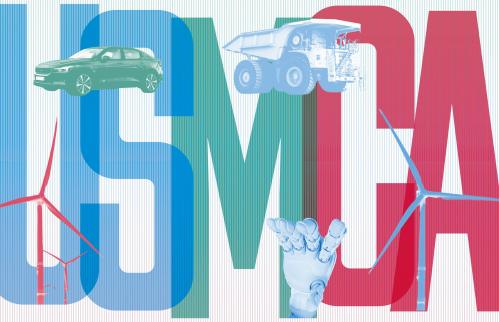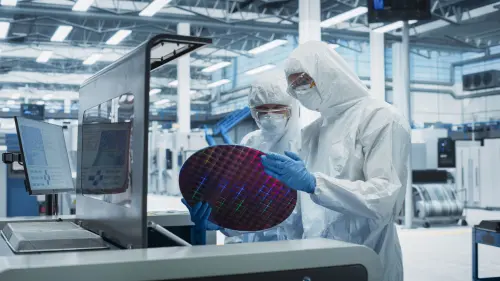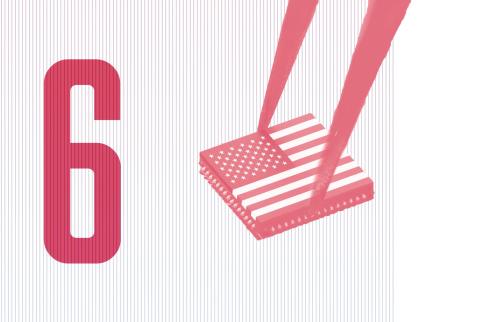Amid the hoopla of celebrating a deal to save 800 jobs at a Carrier Corp. factory in Indiana last month, President-elect Donald Trump promised to usher in a “new industrial revolution“—one that sounded as much like a social awakening as a manufacturing one.
How will the nation achieve that renaissance, though? If past is prologue, the Trump administration will lean on high-profile tweets and one-off job-retention deals combined with moves to renegotiate some trade deals to give U.S. workers a leg up.
And maybe those gestures will help.
However, there is another way to think about touching off an industrial revival in America that brings back economic growth, opportunity, and decent jobs for blue-collar workers.
That approach would embrace the Maker Movement as a deeply American source of decentralized creativity for rebuilding America’s thinning manufacturing ecosystems.
An authentic social movement of hackers and tinkerers, the Maker Movement has grown increasingly consequential in recent years as a new generation of designers and entrepreneurs has employed online tools, 3-D printing, and other new technologies to “democratize” manufacturing and reinvigorate small-batch production and sales.

The makers’ locally-grown enterprises are expanding beyond their artisanal and hobbyist roots to create true business value. The movement has emerged as a significant source of experiential learning and skills-building, as well as creativity for the nation’s innovation-driven manufacturing sector.
More broadly, there is momentum on the ground, both in large cities and small ones, located in both red and blue America, and there is much success to share.
Two years ago, 100 mayors signed a Mayors Maker Challenge to bolster making in their communities, and now, the just-published book “Maker City: A Practical Guide to Reinventing Our Cities” reports how these strategies are working across the nation. Long to short, the story here is that the Maker Movement isn’t just about reviving manufacturing in cities (though it is doing that). In addition, the movement is proving that anyone can be a maker and that genuine progress on the nation’s most pressing problems can be made from the bottom up by do-it-yourselfers, entrepreneurs, committed artisans, students, and civic leaders through what our colleague Bruce Katz calls “new localism.” That’s both empowering and a quintessentially American story, one that de Tocqueville would immediately recognize, and that Donald Trump might even like.
And so it’s time for the nation—and especially its local business leaders, mayors, hobbyists, organizers, universities, and community colleges—to embrace the do-it-yourself spirit of the makers and start hacking the new industrial revolution one town at a time.
Ideally, the incoming Trump administration will see fit to foster this authentically American, red-blue movement with, for example, modest competitive grants to support local maker activity and expand interactions between makers and larger-scale commercial manufacturers. Federal cash, tax credits, and convening capacity could all make a huge difference to cash-strapped networks of civic entrepreneurs.
But even without such support, local leaders should take matters into their own hands and come together—city by city, community by community—to help build a new industrial resurgence that links local ingenuity to genuine economic development.
To help with that, here are five ideas for getting started:
Start organically
What is true of industry clusters is true of the Maker Movement. The most robust ecosystems start out in self-organized fashion; only later do more intentional initiatives make sense. Given that, local stewards should understand what exists before proceeding. They should map the local maker scene, survey relevant people and organizations, and then analyze the ecosystem looking for gaps and problems that require action. In doing this, maker activists often need to look no farther for intelligence than to the people who encourage pride in locally made goods or who run local makerspaces. They will know what needs to be done. Further insight can come, in addition, through the Urban Manufacturing Alliance, which has developed communities of practice that can supply information and common cause on such issues as supply chain deepening, workforce development, land use policy, social inclusion, and local branding. And rightly so: The next generation of manufacturing wisdom is more likely to bubble up from local experiments than trickle down from legacy institutions.

Make space for makers
Every ecosystem needs a hub or set of focal points to anchor related clouds of activity, and frequently makers lack such focal points. One step toward creating such nodes is to organize a Maker Faire that convenes a region’s enthusiasts to celebrate the ingenuity and creativity of local makers. But beyond that, physical space is key. Making requires a place to make, after all: a workshop or a studio, ideally one that is “open” for collaboration. And so local champions will likely want to host or help create or grow maker or hackerspaces in local incubators, accelerators, educational institutions, or design-production districts that can broaden access to the tools, collaboration, and learning needed for design, prototyping, manufacturing, and small-business growth. Such spaces do not just provide space and equipment like 3-D printers and CNC machines; they also provide workshops and courses, and function the way social clubs did for previous generations, by bringing together people with shared purpose and values. And there’s more: If done right and situated well, a makerspace can anchor a local innovation district or other such neighborhood redevelopment. Lively makerspaces in vibrant innovation districts enable makers to knock shoulders with other creative people, as well as those in the tech community, for mutual gain.
Engage community colleges, universities, and national laboratories
Higher education and research institutions offer critical resources for any industrial renaissance. These institutions possess important facilities and equipment and are increasingly focal points of networking, ideas, and industry partnerships. Given that, maker champions should tap these core regional institutions for their knowledge and facilities—and will often find in them enthusiastic partners. Arizona State and Case Western Reserve universities have each opened up their impressive maker spaces to the broader public, for example. Institutions as diverse as Northern Illinois University and Lorain County Community College near Cleveland have created publicly accessible incubators and accelerators to promote manufacturing. And for its part, Oak Ridge National Laboratory in Tennessee operates its Manufacturing Demonstration Facility, which helps companies adopt crucial technologies like additive manufacturing even as the lab supports many of the region’s maker activities. In short, universities and other advanced education centers represent robust sources of ideas, know-how, facilities, and partnership. Local makers should engage them.

Pull in the private sector
Makers should also involve the private sector as deeply as possible. Just as the Maker Movement is a source of talent and ideas for industry, so is the private sector a source of resources and market knowledge for maker communities. Chevron, for example, has pledged significant funding to create Fab Lab maker spaces to support STEM education in regions where it operates. Autodesk provides free access to its CAD software tools to educators and makerspace partners. And in Louisville, GE has played a lead role in energizing the entire maker ecosystem in the area. There, the global conglomerate opened FirstBuild, a makerspace micro-factory and co-creation community for household appliances that has wound up stimulating the local maker community and establishing new educational links throughout the region. In that fashion, as Rachel Barker and Amy Liu have described, one large company’s initiative to tap the Maker Movement for “open innovation” has not just bolstered the local maker network, but helped the Louisville-Lexington region make progress on its Bluegrass Economic Advancement Movement (BEAM), a public-private initiative focused on improving the competitiveness of the region’s advanced manufacturing sector. Local makers should work hard to develop such partnerships, including with local and regional contract manufacturers that can help local start-ups begin to scale up.
Experiment with new forms of education and training
Making is also a powerful resource to communities trying to hash out new approaches to education and training in a moment of tech-driven labor-market flux. Most notably, the hands-on, do-it-yourself ethos of making is increasingly being recognized as invaluable for conveying modern technical know-how while encouraging creativity. In that fashion, making offers exciting new approaches to learning all along the continuum—from K-12 classrooms and higher-ed, to workforce preparation. Early on, educators may want to give kids access to modern production tools as a way to excite involvement. Pittsburgh, for example, started out by placing a single maker space inside a single school. From this evolved the Dream Factory at the Elizabeth Forward Middle School: A set of integrated classrooms where middle-schoolers learn how to use computers, 3-D printers, and CNC tools to create robots, drones, or whatever else they want. As a result, drop-out rates have fallen drastically at the school. Likewise, maker spaces and maker principles are helping community colleges, workforce intermediaries, and companies create training programs that enable more people to gain practical experience. Houston Community College just opened a massive $26 million maker facility, for example, while the California Council on Science and Technology recommended the state create a network of 10 makerspaces linked to community colleges as a tool for preparing students for the innovation economy. Meanwhile, more companies are working by themselves or with partners to create maker-style mentorships, apprenticeships, and internships. The Detroit luxury goods manufacturer Shinola, for example, has been reinventing the traditional apprenticeship by bringing in long-retired master artisans to help teach relevant crafts to younger, less experienced makers. Shinola shows that employers increasingly value hands-on training that reflects how work is really done in industry today.

In the end, the future of manufacturing in America is going to be high-value, high-tech, and more automated—dominated by new production technologies and fast-evolving supply chain practices. President-elect Trump’s focus on manufacturing resonated with millions of blue-collar workers because his promises responded to rising anxiety in the country about where the jobs will be in a new automated world, and where automation will hit hardest. And yet, those unknowns only make the maker movement more relevant. In city after city, region after region, the movement offers a practical, inclusive, all-hands-on-deck approach to preparing for and shaping the future of manufacturing. For individuals, making engages students in both physical production and creative coding. As a common cause for maker spaces, community colleges, universities, and employers, the movement is helping deliver more relevant workforce development skills. And for the nation’s manufacturing and technology industries, making is stimulating a new, more creative approach that is reinventing the sector and making it more competitive. Ultimately, the movement is one modest way to renew the economy with broad engagement and experimentation at a time of uncertainty and division.
American communities—blue and red, big-city and small and rural too—have an exciting opportunity before them. By embracing the do-it-yourself ethos of the maker movement, communities across the country can renew a sense of local community and help rebuild American manufacturing from the ground up.
The Brookings Institution is committed to quality, independence, and impact.
We are supported by a diverse array of funders. In line with our values and policies, each Brookings publication represents the sole views of its author(s).





Commentary
Five ways the Maker Movement can help catalyze a manufacturing renaissance
January 4, 2017